When Fitzmaurice returned to Vancouver in July 1916 the city and the country was already deeply engaged in the war. The cartoons that Fitz would produce that focussed on the home front reflected the experience of people in the midst of the most important global event of their lives. Vancouverites were involved in all of the activities that would consume home fronts across the country, from reoccurring recruitment drives to fundraising for charities both overseas and at home.
While the stories of Canadians serving overseas during the Great War have been documented for generations, life on the home front in Canada has only recently been examined in detail by historians. Most of these are studies of specific communities and they share the methodological belief that we can gain a fuller understanding of Canada during the First World War by looking at specific local experiences that the particular conditions within cities, towns, and rural communities helped to determine how the country responded to the war. The more community studies are done, so the approach suggests, the more we will know. And again, the novelty of total war is important here. Without a game plan based on previous experience, the war effort was an improvised one, borne and often reborn within local environments. Governments at all three levels were slow, indeed reluctant, to take control of economic, political, and social institutions in order to coherently face the challenges of war. In the end, the federal government would piece-by-piece impose widespread controls, but the process was a halting one.
VOLUNTEERISM, SACRIFICE, AND (DIS)UNITY
Historians examining the home fronts in Canada have focussed on several key overlapping topics. These include the ups and downs of recruitment for men overseas; wartime charities, fund-raising, and local efforts to support the war; the changing and unchanging roles of women and the achievement of women’s suffrage; the treatment of so-called enemy aliens, ethnic and religious dissenters and general intolerance during the war; and munitions production and the evolution of the wartime economy. Along with these commonly-experienced issues, historians have identified some important underlying themes through which to view the Great War experience in Canada. One of these is the decline of ‘volunteerism’ as the organizational principle to meet wartime challenges; the war in Canada can be viewed as the story of the incremental abandonment of liberal ideological policies and the imposition of state controls and authority in all aspects of the war effort. Conscription for military service, brought in by the Borden ‘Union’ government in the fall of 1917, was the most obvious feature in the decline of volunteerism during the war. But there were others. For instance, war munition production, which was distributed in an ad hoc manner to well-positioned Canadian companies in the first two years of the war, was eventually taken over by the state-controlled Imperial Munitions Board. During the final two years of the war the IMB was by far the largest economic entity in Canada.
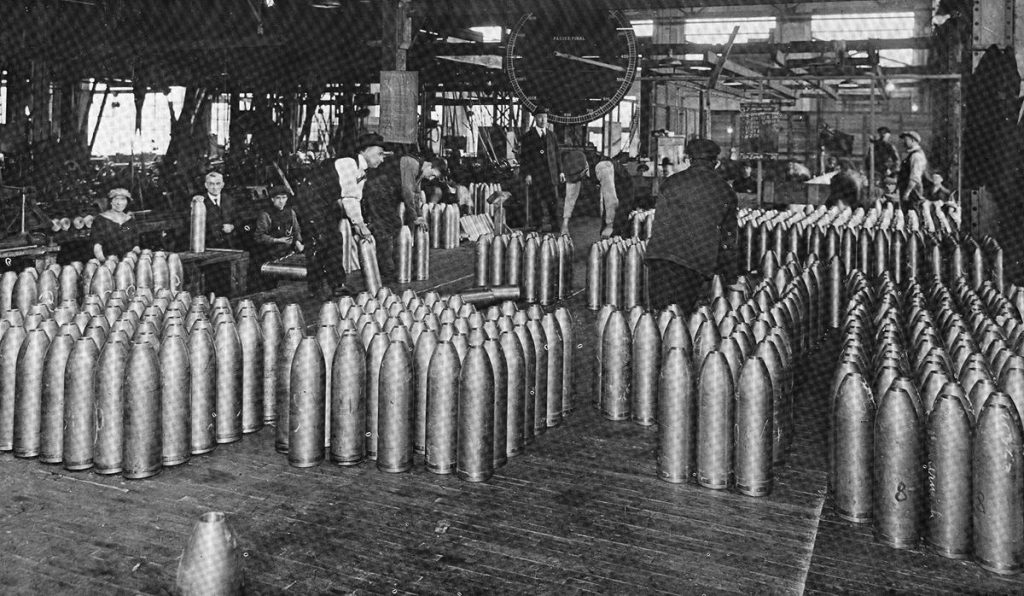
Leaside Munitions Company, Toronto Ontario 1916
A second important theme on the home front was the perception of the war as a moral crusade and the compulsion for wartime sacrifice. This did not happen immediately, and the causes are complex. Certainly the moral arguments for a war for democracy and against autocracy and German militarism came early with rumours in September 1914 of German atrocities in Belgium. Canadian moral indignation increased in the spring of 1915 with the German sinking of the British passenger liner Lusitania and the use of chlorine gas on Canadian troops in the second battle of Ypres. As Canadians began to taste the very unromantic realities of a modern total war – one that would grind up the lives of thousands of young Canadian men – moral commitment became a central part of life at home. God seemed to help. Canadian churchmen and women presented the conflict in religious terms to a largely faith-based population who looked for answers through their congregational organizations. And governments played upon well-worn moral arguments as strategies to mobilize Canadians, whether it was to support recruitment, conserve resources for wartime use, or sell Victory Bonds. As the lists of men killed or wounded became longer and more frequent, particularly after the Battle of the Somme in the summer and fall of 1916, Canadians’ moral commitment to the war actually increased. There was no turning back – to end the war without victory would be tantamount to abandoning those who had already lost their lives in France and Belgium. Sacrifice at home marched alongside the sacrifice of men overseas.
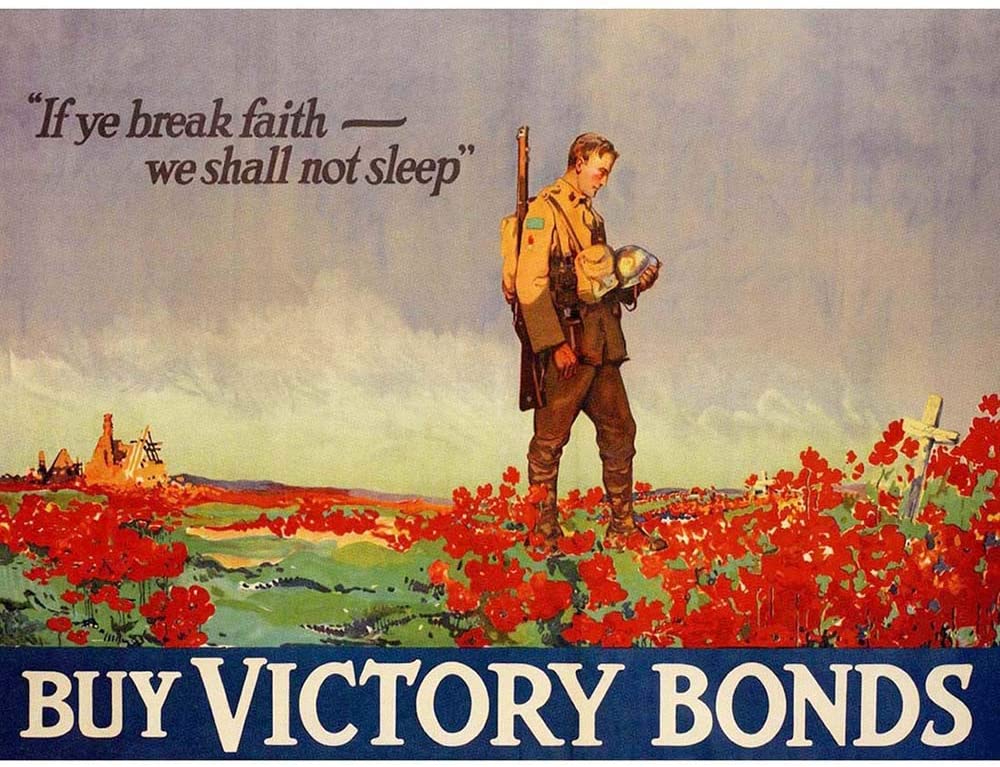
Canadian Victory Bond Advertisement
A final overarching theme on the home front during the First World War is the apparent dichotomy between the war’s unifying and divisive effects. This topic has been well explored on a national level. Any introductory Canadian history textbook will state that the war initially united Canadians, there was widespread enthusiasm and support for Canada’s involvement, and all of this was based on a certain degree of ignorance – had Canadians and their leaders known in August 1914 the carnage that modern trench warfare would produce, surely a different course of events might have unfolded. But in the contingent autumn of 1914 a broad cross-section of support existed from a variety of groups, some of which had professed pacifist and other anti-war ideals before the conflict. Such was the power of moral righteousness. In some circles that support would continue, even increase in maturation, after the brutal realities of war revealed their horrors and steeled commitment. In others, support waned and even evaporated. Those deemed “enemy aliens,” for instance, had little choice in supporting the war. After the passage of the War Measures Act in August 1914 gave the federal government sweeping wartime powers, residents who held German and Austria-Hungarian citizenship were registered, watched, and in some 8000 eventual cases interned in camps for the duration of the war. Growing intolerance flushed out other groups with good reasons to question the war.
The most powerful source of dissent and indifference towards the war came from Quebec. At the outset, French Canadians and their leaders stood side-by-side with English-speaking Canadians in supporting the war. Even the influential Quebec nationalist Henri Bourassa saw the conflict as a necessary struggle against autocracy and militarism. But support in Quebec eventually fragmented. The fall in recruitment rates after the summer of 1916 forced leaders outside of Quebec to call for mandatory military service – conscription. Opposition to conscription came from a number of quarters, including farming communities where young men were needed to reap the benefits of wartime agriculture, labour organizations who had come to define the war as an imperialist and capitalist conflict, and various pacifist groups like Mennonites and Doukhobors who saw conscription as a denial of promises made before the war that they would not be compelled to serve in the military. However, it was Quebec’s lower recruitment numbers, especially for overseas service, that became the focus of conscription advocates. Undaunted by the predictable political consequences, the federal government passed the Military Service Act in July 1917, leading to an explosion of violence and civil disobedience by anti-conscriptionists in Montreal and across Quebec. If the war had initially generated at least the appearance of unprecedented unity in 1914, such collective purpose disappeared under the heavy demands of war by the summer of 1917.
A CARTOONIST DOING HIS BIT
Canada’s journey from unity to division, from volunteerism to state controls, and the level of individual sacrifice made on the home front are captured in Fitzmaurice’s wartime cartoons. Images that gently questioned and certainly mocked the war effort at home are examined in the following chapter. Here, we look at the propaganda cartoons and illustrations Fitz produced to support and encourage contributions on the home front. Boosting local recruitment was a role most English language newspaper cartoonists across the country took on, especially those papers aligned with the Conservative party. Fitzmaurice, however, only produced one front-page recruitment cartoon during the war, the self-congratulatory “No Need to Hide Our Light under a Bushel” (Figure 1).
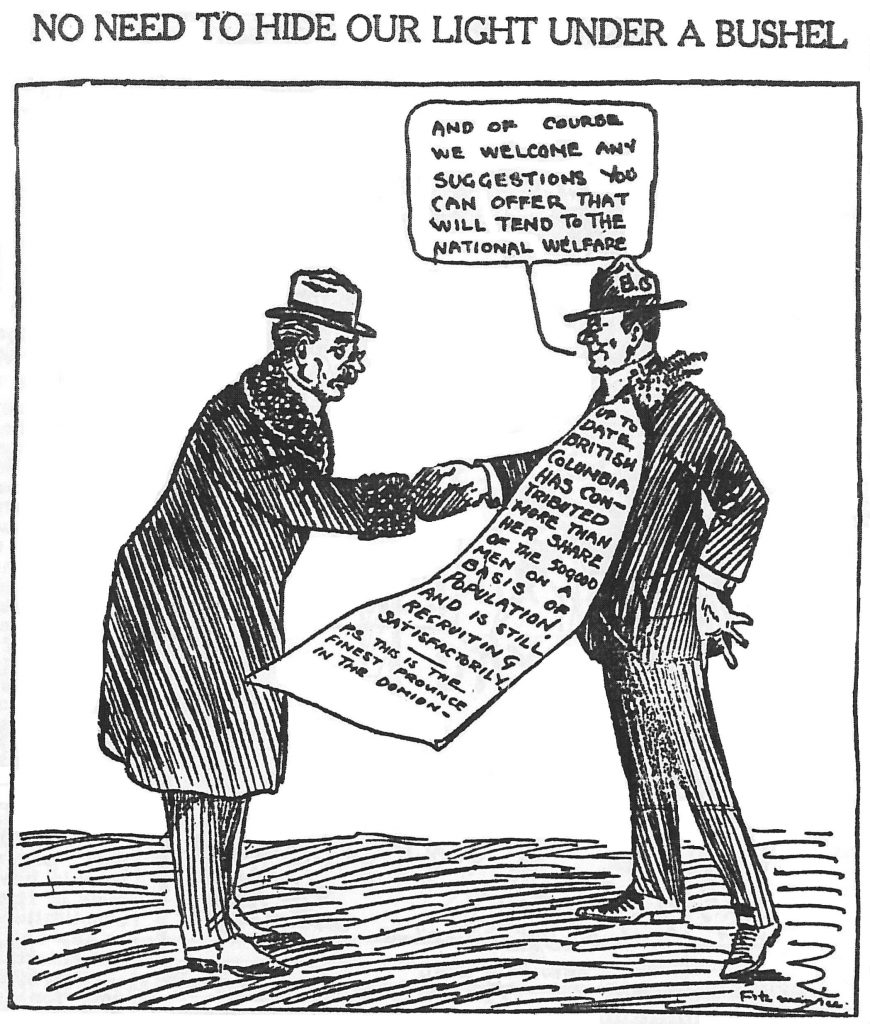
Figure 1: No Need to Hide Our Light Under a Bushel (Province 16 December 1916)
Produced in December 1916 in the midst of Canada’s recruitment crisis, we see a dignified Prime Minister Robert Borden shaking hands with Fitzmaurice’s default allegorical symbol for British Columbia, Mr. BC. As mentioned earlier, recruitment numbers dropped significantly after August 1916, leading to an epidemic of finger-pointing by politicians and commentators across the country. British Columbia had always been proud of its contribution in terms of manpower, and this cartoon reflects that. Mr. BC sports an oversized “tag,” an early version of a lapel button or crest given out to individuals to acknowledge their contribution to a particular cause or charity. The overfilled tag reads, “Up to date British Columbia has contributed more than her share of the 500,000 men on a basis of population, and is still recruiting satisfactorily.”
The claims around British Columbia’s high level of recruitment made by commentators like Fitzmaurice were repeated loudly during and long since the war. Fitzmaurice felt so strongly about the province’s exceptional contribution that this cartoon was his only image produced on British Columbian recruitment. Truth is, accurate provincial enlistment numbers are difficult to nail down. The best official sources we have suggest that British Columbia enlistment was fairly typical of other provinces other than the under-performing Quebec, Saskatchewan, and Prince Edward Island, and lagged significantly behind both Ontario and Manitoba. Here is what the number say. Out of an estimated military-aged male population of just under 180,000, around 55,000 British Columbia males signed up, for an enlistment rate of 31 per cent. By comparison, the enlistment rate in Alberta (with a higher overall population but a lower number of eligible males) was 35.1 per cent, in Manitoba 47.6 per cent, and Ontario 36.8 per cent. In the enlistment cellar was Saskatchewan with 23.2 percent, Quebec 19.9 percent, and Prince Edward Island 19.3 per cent. In fact, British Columbia’s enlistment rate was in the middle of the pack (sixth out of nine provinces) and slightly under the national average of 31.5 per cent. Of course, provincial boosters during the war (and even parochial historians thereafter) preferred to measure enlistment as the rather meaningless percentage of the province’s total population, rather than its eligible male population. This certainly made British Columbian enlistment numbers appear higher. Out of a total estimated population of 442,000, British Columbia’s enlistment rate was 12.6 per cent compared to Alberta at 10.7 percent, Manitoba 12.5 per cent, and Ontario at a misleading 9 per cent. Hidden behind these numbers, of course, was the large percentage of young men in British Columbia. And out of sight completely were the thousands of recently immigrated young British men across the country who signed up directly, and early on, with the British Expeditionary Force.
But the sentiments behind “No Need to Hide Our Light under a Bushel” were not based on numbers. Fitzmaurice and other British Columbians defended their commitment to the war for more visceral reasons. For two years they watched legions of young men in uniform march off to the train stations, many never to be seen again. This was a sight most had never seen before. Statistics were not required to justify what seemed an unquestionable sacrifice. And for this reason, Fitzmaurice never felt compelled to dwell on local recruitment in his cartoons.
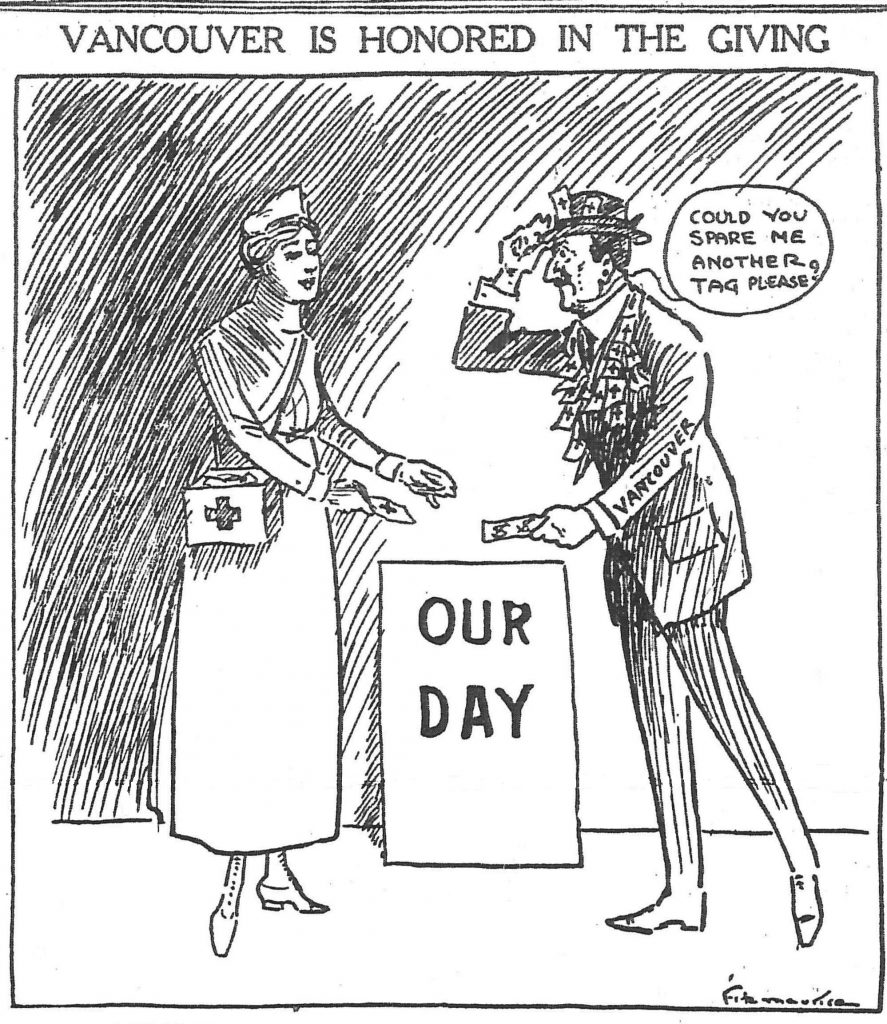
Figure 2: Vancouver is Honored in the Giving (Province 19 October 1916)
While Fitzmaurice spilled little ink promoting recruitment, he did work hard to encourage the enlistment of wealth to fight the war. Over the course of the last two years of the war Fitz published over three dozen images promoting wartime charitable causes and state-sponsored revenue schemes such as Victory Bonds. Early on Vancouver, like other larger Canadian communities, organized fundraising drives to support various causes overseas and at home. Volunteers hit the streets on so-called “Tag Days” to canvass Vancouverites for contributions; contributors would receive a tag to wear as proof of their donation. In the cartoon “Vancouver is Honored in the Giving” (Figure 2) Fitz documents a Red Cross Tag Day from mid-October 1916.
The Red Cross volunteer in a nurse’s uniform accepts a donation from an allegorical Mr. Vancouver, who has enthusiastically purchased multiple tags already that day. Can we assume that volunteer charities like the Red Cross encouraged the competitive donational spirit suggested here? Possibly. We do know that there was no shortage of opportunities for the people of Vancouver to fund wartime causes. By the end of the war most middle class Vancouverites had a drawer at home filled with donation tags and buttons.
It is interesting to note the subtle differences in masculine deportment between Fitzmaurice’s Mr. Vancouver pictured here and Mr. BC from the previous cartoon. While Mr. BC was always drawn as an outdoorsman or ranger, often in boots and always in a Mountie’s hat – sometimes referred to more generically as a “campaign hat” – Mr. Vancouver was invariably a tailored, modern urbanite, a man with business interests, a ‘go-getter’ from a bustling youthful metropolis, as Vancouver liked to present itself. The distinction was an important one, and reflects the separate economic character and function of Vancouver from the wider province of rural and resource communities and wilderness terrain.
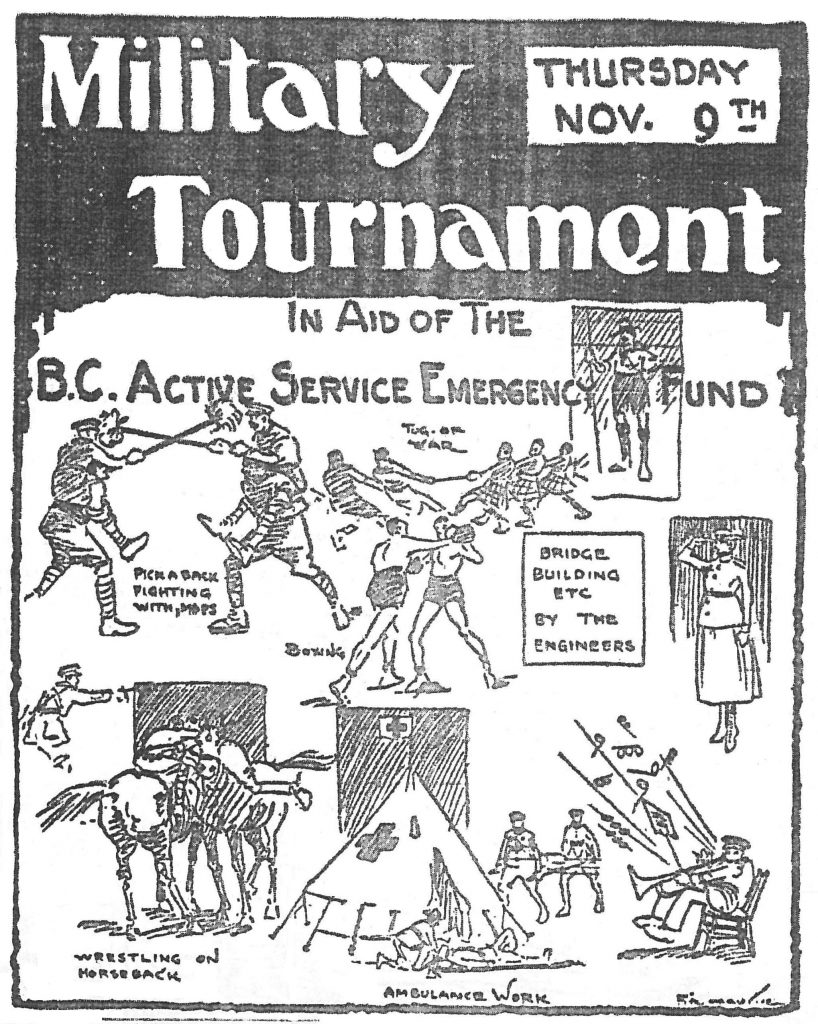
Figure 3: Military Tournament (Province 8 November 1916)
Fitzmaurice also produced cartoons for specific local causes and fund-raising events. Representative of this was his illustrations used to advertise a “Military Tournament” (Figure 3) in support of the BC Active Service Emergency Fund in November 1916. The day-long event was one of dozens of mixed athletic/military demonstration events that took place in Vancouver during the war. This tournament, as can be seen in Fitz’s drawings, included the understandable martial sports of tug-of-war and boxing, military demonstrations by the engineers of bridge building and emergency ambulance work, and the simply odd competitions of “piggy-back fighting with mops” and “wrestling on horseback.”
Fitzmaurice’s “Military Tournament” cartoon reminds us of the complicated relationship between entertainment – specifically organized sport – and wartime sacrifice during these years. When the war began, organized sport, whether amateur or professional, contracted immediately. This happened in part because of the loss of young male sportsmen into military service. Sports historian Bruce Kidd argues that, at least at a national institutional level, the “war brought most activities to a halt,” as most of the major national sport organizations suspended events. Because men of British background were over-represented in organized sport and in the first wave of enlistments, many teams and leagues were simply drained of players—the first great impact of the war on sport. After the true horrors of the war were revealed in the spring of 1915 with the Second battle of Ypres, an ideological position grew through both popular opinion and formal recruitment campaign strategies that dismissed civilian sport as a barrier to enlistment and a luxurious diversion unaffordable during wartime. This prohibition on sport, however, was not imposed on the men in uniform themselves. Sportsman’s battalions were formed, military teams created, and khaki sports events promoted.
The image “Military Tournament” reflects this sporting allowance for servicemen. But it also reveals an accommodation that both amateur and professional sport organizers made to fit with wartime demands. As early as the fall of 1914, organizers sought to make sport events a core part of wartime fundraising, enlistment, and civilian mobilization, in effect marrying sports activities to the needs of the war. Beginning with a fund-raising equestrian event less than a month after the war began, the so-called “Patriotic Sports” event became a staple of the Vancouver wartime calendar. Another early event was the War-Fund Lacrosse double-header organized by both local amateur and professional lacrosse organizations in Vancouver and New Westminster in September 1914. By the summer and fall of 1916, when Fitzmaurice produced the “Military Tournament” illustration, patriotic sports events were large, popular, and well organized, and had at best complicated the argument that sport and the needs of war were incompatible. Over the next two years Fitz would produce several cartoons poking fun at patriotic sports events in the city. By 1917 Province newspaper sports editor Art Garvey actually expanded sports coverage and began to articulate through his editorials a nuanced view of sport as a necessary complement to war, a view that would become central to mobilization and morale on the home front during the Second World War. “Why,” he asked rhetorically, “discontinue athletics in any form?”
EVERYBODY! TALK BONDS!
Another mainstay of Fitzmaurice’s home front images were his “Victory Bond” cartoon promotions. Victory Bonds were a debt security program aimed at the public to finance expenditures during wartime. War Bonds of various types were experimented with before 1914 by the United States and other countries, but were used extensively by almost every belligerent to meet the crippling costs of the First World War. In Britain they were called “War Loans,” in the United States “Liberty Bonds,” and in Canada “Victory Bonds.” The war bond program began in Canada in 1915 after the federal government’s traditional investment markets – Britain and the United States – had dried up under the global demands for available capital during wartime. The federal government, at first reluctantly, turned to the Canadian public to help finance the war, and the enormously successful Victory Bond program was born.
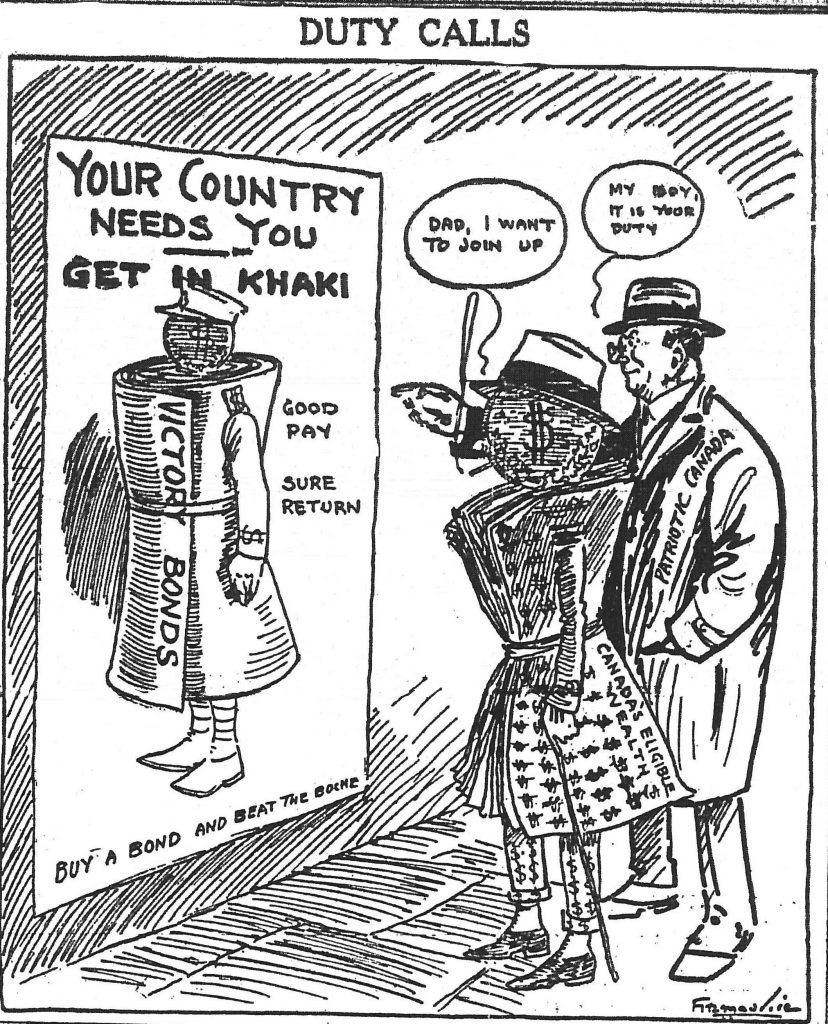
Figure 4: Duty Calls (Province 8 November 1917)
There were a total of six bond offerings between 1915 and 1919, each more successful than the last. Fitzmaurice documents the fourth Victory Bond “drive” in the fall of 1917 with the cartoon “Duty Calls” (Figure 4). Playing upon any number of recruitment posters, the fatherly figure “Patriotic Canada,” urges his son, “Canada’s Eligible Wealth,” to “get in khaki!” “My boy,” declares Dad, “it’s your duty!”
All of Fitzmaurice’s Victory Bond images played upon the growing notion that investment in the war effort through instruments like war bonds was almost as useful as serving overseas. In effect, it became an excuse not to. This explains Fitzmaurice’s use of the military metaphors and allusions in his Victory bond cartoons. “Don’t Let Him Run Out Of Shells” (Figure 5) from the same November 1917 Bond drive offers a good example.
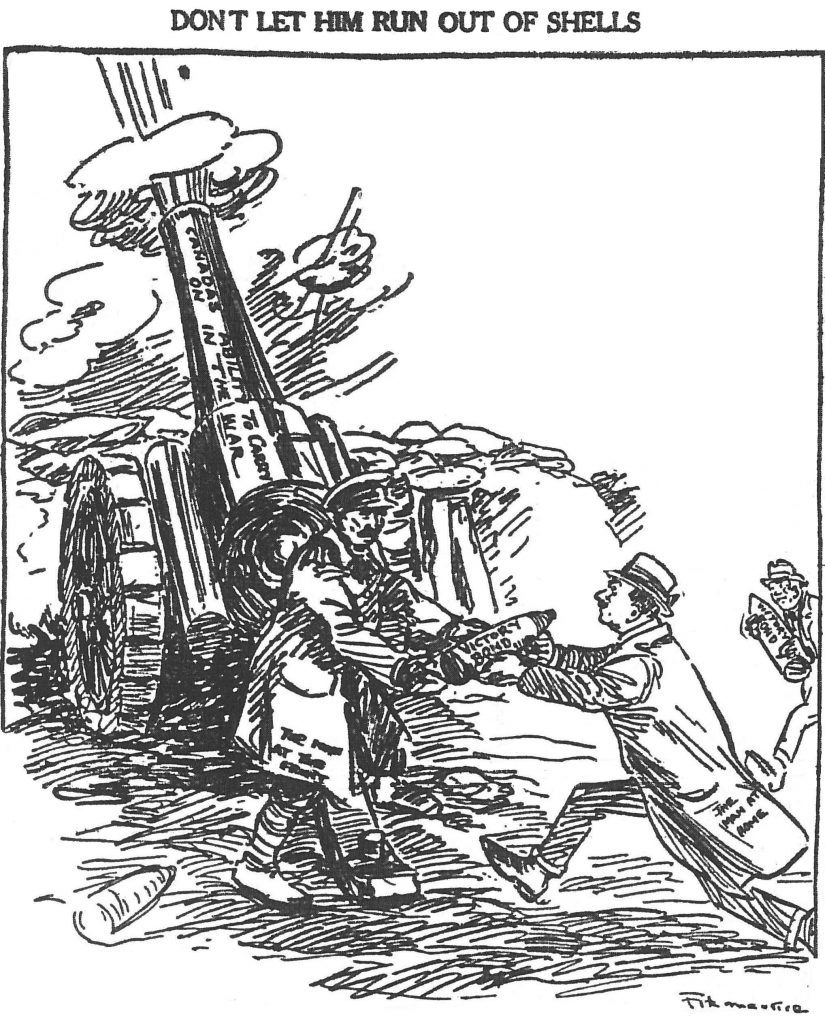
Figure 5: Don’t Let Him Run Out of Shells (Province 9 November 1917)
In this cartoon the “Man at Home” delivers his investment in the form of an artillery shell to the “Man at the Front.” The funds are used to fire an artillery gun labelled “Canada’s Ability to Carry On in the War.”
Three days later the cartoon “Get in Line” abandoned symbols entirely and spelled it out for British Columbians: “If you can’t shoulder a rifle, shoulder a bond.” By the end of the fourth Victory Bond campaign in November 1917, over 820,000 Canadians subscribers had invested $398 million, making this drive the most successful yet.
The following year a fifth Victory Bond offering produced $660 million from an amazing 1,067,879 investors. For this, Fitzmaurice produced a new batch of Victory Bond promotional cartoons. However, possibly because the war was nearing an end, he jettisoned the heavy-handed promotion of the previous campaign, choosing instead a more upbeat, light-hearted approach that paralleled his emergent multi-panelled comic style examined in more detail in the following chapter.
But these cartoons are no less persuasive. Fitz’s “Space the Committee Overlooked” (Figure 7) from October 1918 nicely introduces the style. These images combined five, sometimes six, separate vignettes that carried features or situations around a common theme.
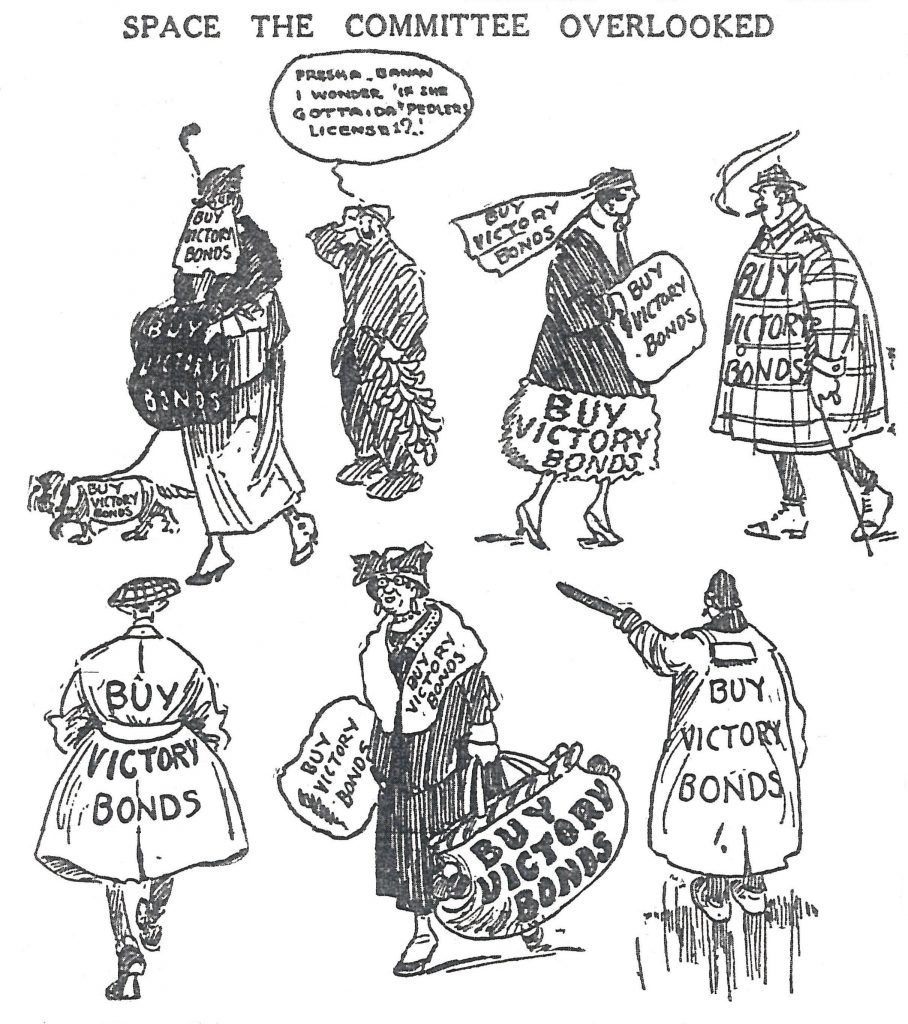
Figure 6: Space the Committee Overlooked
In this case we see people on the street, presumably Vancouver, all sporting clothes and accessories advertising Victory Bonds, the public spaces the local VB committee overlooked. While Fitz likely chose a variety of character types (women/men; young/old; fat/skinny…) to spread the comedic application, his choices are actually rather narrow: all are well-dressed urbanites of middle class or respectable working class background. Even the stereotypical Italian pedlar – “I wonder if she gotta da pedlars licence!?” – poses no threat, although it is significant that the VB committee did not choose immigrant street sellers to promote the Victory Bond campaign.
Fitzmaurice’s multi-panel style increased comic potential by embedding absurdity within commonly experienced situations. While this approach is explored more deeply in the following chapter, one final Victory Bond cartoon from late October 1918 that uses the style is worth seeing. In “Everybody! Talk Bonds! (Figure 8), Fitzmaurice imagines if everyone were to promote the sale of Victory Bonds in their everyday endeavors, from the dentist’s chair to a seat in a restaurant.
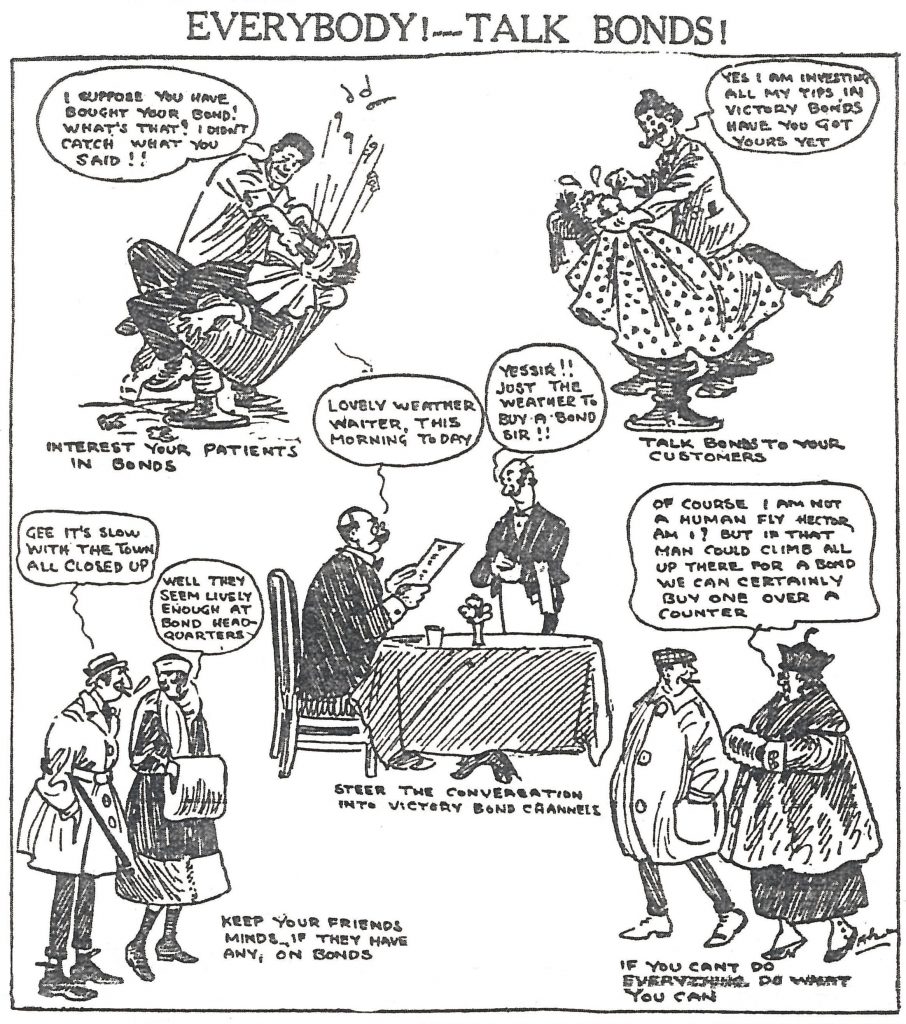
Figure 7: Everybody! Talk Bonds! (Province 30 October 1918)
Fitzmaurice was careful to draw these vignettes as generic moments, above the specifics of place. But sometimes Fitz could not help but include a hint of the local Vancouver experience, as he does here in the lower right with a reference to the “Human Fly.” On November 1, 1918, Harry H. Gardiner (aka the “Human Fly”) pulled off a stunt he had done for many years across North America. He scaled the outside of the seventeen-storey Vancouver World Building, later renamed the Sun Tower, in front of ten thousand tense Vancouver onlookers. As the crowd had collected just before Gardiner’s climb, event organizers “unfurled a banner showing the total local contributions to the Victory Loan.” After Gardiner had almost reached the top in a thrilling climb that included a healthy amount of showboating and near disasters, the Human Fly shouted out to the happy crowd below: “Buy Victory Bonds!!” The event culminated in speeches by local organizers on the importance of the Victory Bond drive. Fitzmaurice’s cartoon was published two days before the climb and makes a humorous reference when Hector’s wife makes her appeal: “Of course I am not a Human Fly Hector, am I? But if that man could climb all up there for a bond, we can certainly buy one over a counter.” Gardiner was one of several “Human Flys” that entertained city dwellers in this period. He would go on to climb over 700 buildings in North America and overseas, usually for contracted promotional purposes and increasingly in contravention of local bylaws. His death is a bit of a mystery, although one undocumented source believes he was beaten to death years later by a crowd at the base of the Eiffel Tower in Paris.
In addition to financing the war through voluntary public investment like the Victory Bond program, the federal government also implemented controls on public consumption of specific fuels and foods, resources needed for war-related purposes at home and overseas. Shortages of fuel – mostly coal – began to impact munitions production by the winter of 1916-17. These shortages were compounded by the United States’ entry into the war later that spring, as the American government imposed its own controls on energy resources in anticipation of the war. As a result, the Canadian government turned to a combination of regulation, coercion, and encouragement to cut public consumption of fuels and divert these strategic resources to wartime production and use. Controls on non-essential railway routes, commercial entertainments and pleasures arrived by the summer of 1917. Newspapers across the country also began to echo government suggested “Gasless Sundays” and “Heatless Mondays,” a diffuse form of state sponsored propaganda historian Jeffery Keshen calls “information infusion.” With the success of such programs always tied to the survival of the men overseas, public compliance was almost a certainty.
Regulations and public compliance were also key elements of wartime food controls, which began in June 1917 with the creation of the Food Controller’s Office. The Food Controller had regulatory power over the production, distribution, pricing, and consumption of food. Much of this regulatory framework was aimed at farmers, but the public face of wartime food controls was pointed at the consumption practices of urban consumers. As Keshen writes: “Through Publicity and Educational Sections, the Food Controller and Food Board issued press releases, a departmental newsletter, posters, pledge cards, flyers, cookbooks and in 1918 produced a movie entitled War Gardens instructing urbanites on how to grow vegetables.” To ensure the street level success of this ‘information infusion,’ local food control sub-committees were created in larger urban communities.
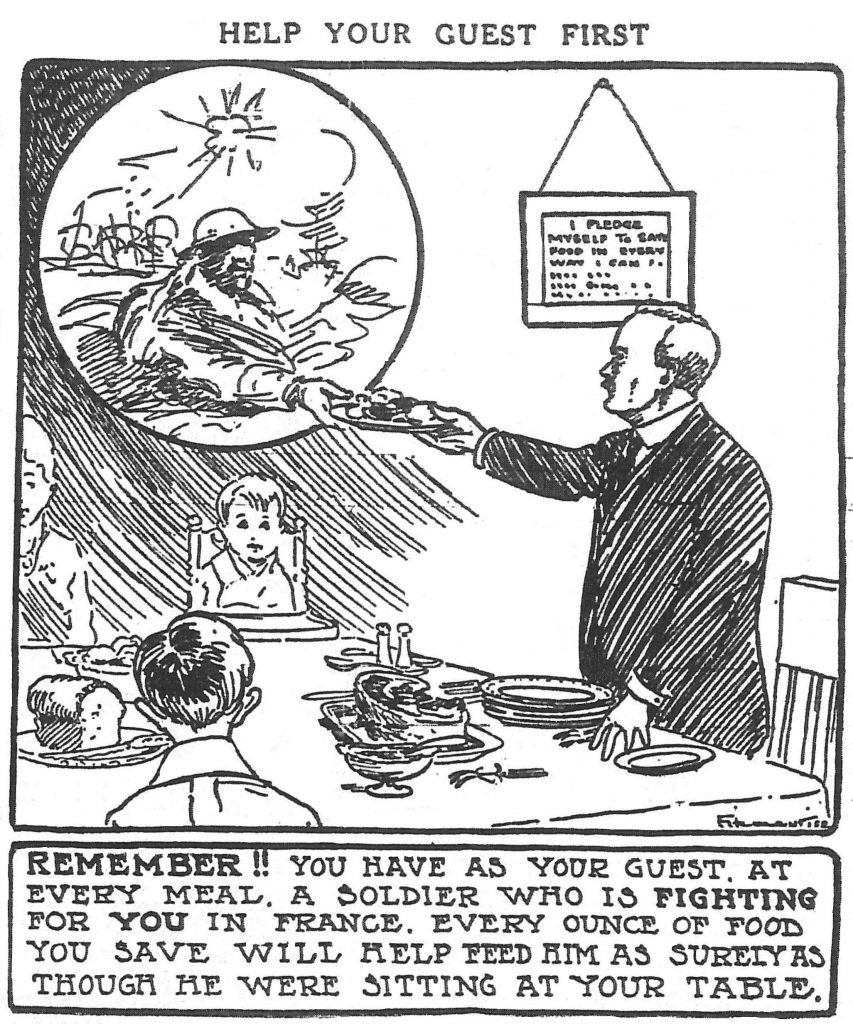
Figure 8: Help Your Guest First (Province ??? April 1918
However, the greatest asset for state propaganda is always public support, and middle-class British Columbians generally fell into line, becoming enthusiastic conservationists and committed backyard vegetable farmers. Fitzmaurice’s cartoon “Help Your Guest First” (Figure 9), from April 1918 captures this spirit of wartime conservation amongst middle-class Vancouverites. Beneath a framed pledge card (likely issued by the local food control committee) that promises to “save food in every way I can,” a family patriarch passes the first plate of dinner to a Canadian soldier in the trenches overseas. “Remember!!” implores the caption, “You have as your guest, at every meal, a soldier who is fighting for you in France. Every ounce of food you save will help feed him as surely as though he were sitting at your table.”
As we shall see in the following webpage, Fitzmaurice produced dozens of cartoons poking fun at wartime gardens and other local conservation efforts, but only a handful made blunt and serious appeals for compliance like that in “Help Your Guest First.” Perhaps timing explains this cartoon. By April 1918 a level of war fatigue was affecting all Canadians; even the most committed longed for an end to the war and a return to normal. “Help Your Guest First” was a reminder for a growing number of restless urban British Columbians that the war was still being fought at home.